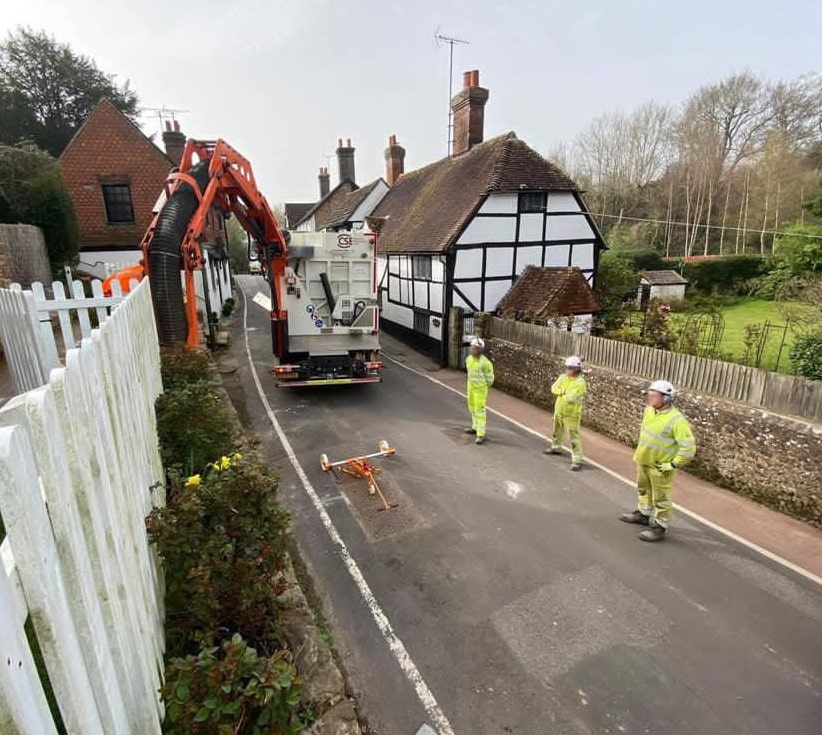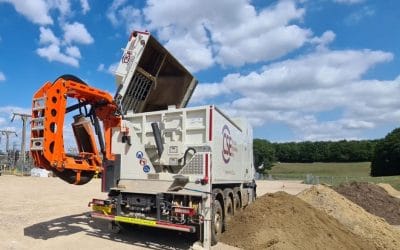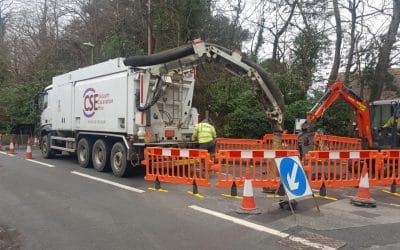Traditional excavation methods carry a lot of inherent risks, and despite the fact that Vacuum Excavation removes some of these risks, the CSE team still ensure that on-site safety is of the highest standard on every single job. Excavations need to be thoroughly planned out, with regular assessments and on-site checks undertaken before the work is conducted.
This responsibility falls to the on-site manager or supervisor who should have a full understanding of the risks involved when undertaking an excavation. For example, the CSE team are able to conduct an excavation no matter the weather, however, it is vital that the ground conditions are checked regularly throughout the days in which there is heavy rainfall or stormy weather to ensure that excavating can be conducted safely.
What are the four aspects to consider to ensure your site is safe with Vacuum Excavation?
Protection Equipment
Construction sites can be hazardous places, so it is vital that all members of the on-site staff are protected with the correct equipment, such as:
- Fluorescent jackets
- Gloves
- Hard hates
- Hearing protection
- Safety footwear (steel-toed boots)
- Safety goggles
If any of these items become damaged in any way, the member of staff must leave the site and only return when the affected equipment has been replaced.
Safety Measures
The on-site manager needs to ensure that the safety measures are implemented immediately, as when working on the excavation, workers must have safe and appropriate access to the site such as ladders, steps and ramps.
Any excavated material must be stored in a designated tipping area, away from the walls of the excavation or trench at a minimum of two feet. Storing the materials close to the excavation could result in debris falling inwards and being liable for a collapse. Barriers ought to be installed around the area to prevent on-site workers, the general public and vehicles from falling into the excavation.
If working at night or in dark conditions, appropriate lighting and warning signals should be activated inside or within a close distance for hazard awareness.
Location of Utilities
Utilities should be supported and identified by tapes and markers above the ground. They should be labelled to inform workers of their service type and the depth, which will overall assist with the planning and excavation.
Protective Systems
To ensure that your on-site workers are protected from a cave-in, there are four types of protection you can utilise.
Benching: The construction of steps or levels within the sides of an excavation that will allow workers to safely exit during an emergency.
Sloping: The manipulation of a site’s walls, inclining them away from excavation opening will prevent them from caving inwards.
Shoring/Shore: A structure that physically supports the walls of an excavation or trench will prevent a potential collapse.
Shielding: A structure that can withstand the weight of a cave-in will protect the workers.
Vacuum Excavation offers a faster, more cost-effective solution than manual hand digging. A standard Vacuum Excavation can remove 2m3 of spoil per hour, while an inbuilt skip can hold up to 10m3 before it needs to be emptied. In short, one Vacuum Excavation vehicle will complete a job in the fraction of time in which it would take a team of labourers or a digger.
If you would like to enquire about any of our systems or hire our team for work, please complete our short contact form.





